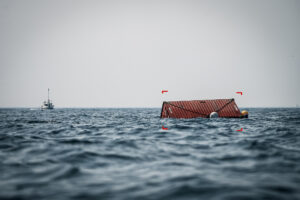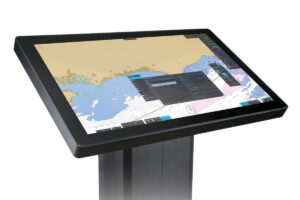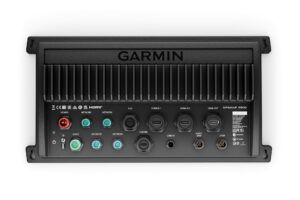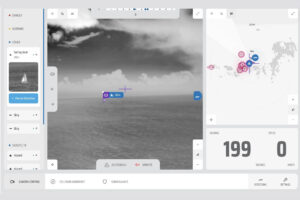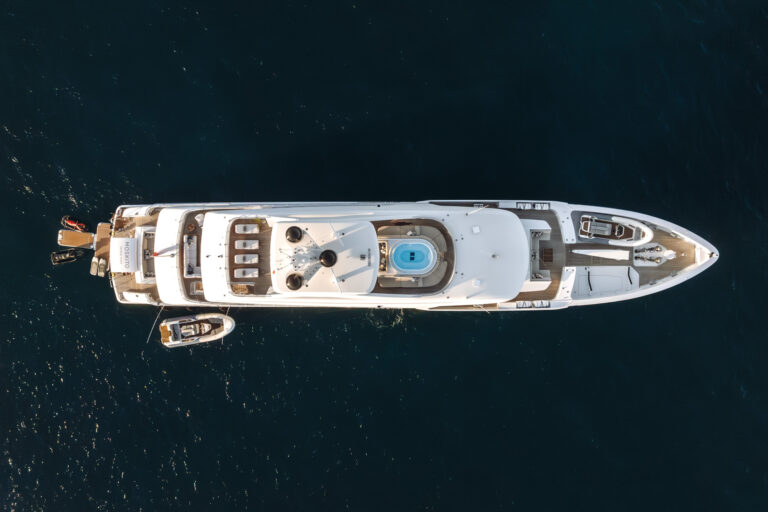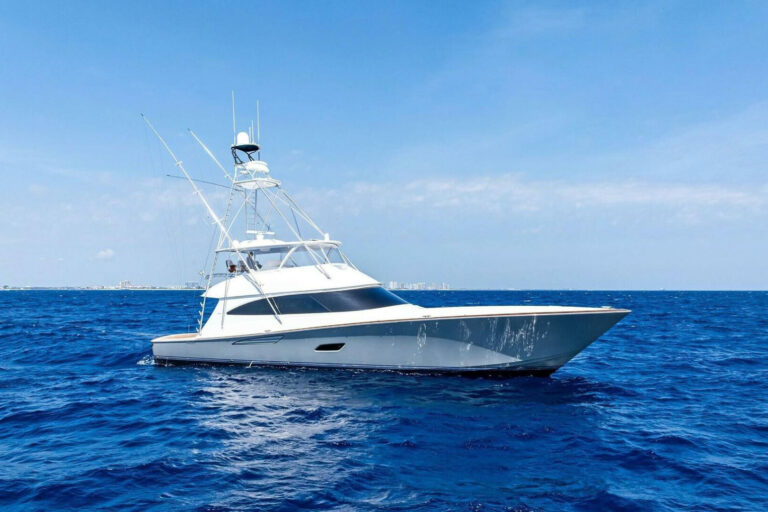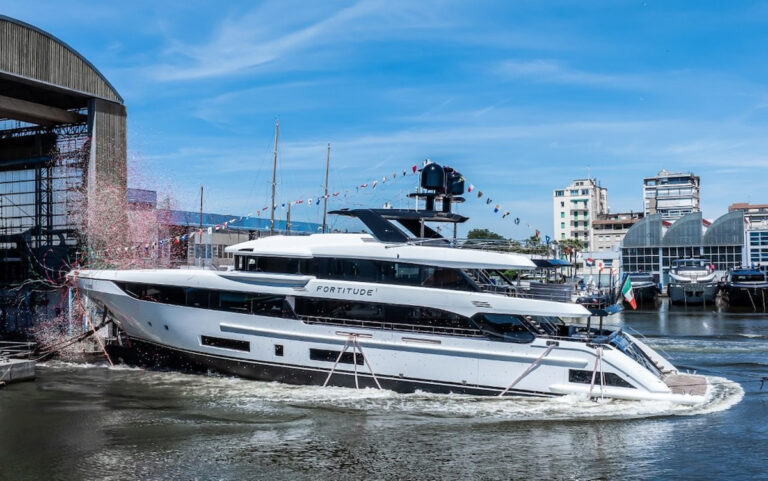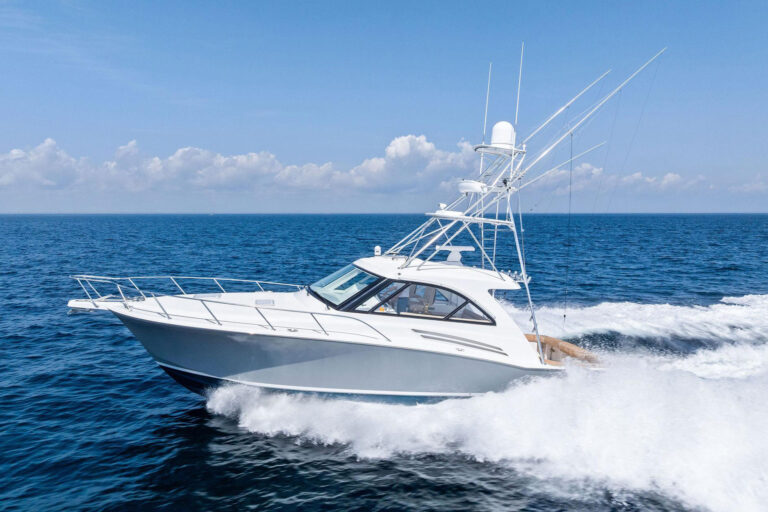
Like many boaters, I grew up in a conservative home that emphasized “yacht-club manners.” Swearing earned mouthfuls of soap … unless my dad issued the vulgarity, at which point the (perceived) lesson swung from observing “YCMs” to memorizing a forbidden-but-luring lexicon. And while my dad typically eschews swearing, nothing triggered count-on-it profanity lessons faster than a gummed-up “distance, speed, temperature” paddle-wheel transducer.
This was decades ago, before transducers went digital; while undercarriage growth was a common culprit, non-transducer-based conundrums often required time-consuming downstream diagnostics. I happily used these situations to expand my forbidden vocabulary, but an analytic tool would have saved me quite a few bars of Dove soap. And fortunately for today’s children of yachtsmen, this instrument now exists.
Today’s sonar transducers are anglers’ best friends until there’s a problem, one that involves a through-hull hole and, likely, a salvage-crew nightmare instead of a simple equipment swap. Troubleshooting transducers, historically, has been an expensive voyage of exploration in which the smoking gun could be as basic as a bad cable or as involved as a helm’s multifunction display — enough to make any yacht owner mutter a few choice words.
While Airmar originally envisioned its TDT1000 (aka “transducer diagnostic tester”) as a tool for electronics installers, the device is equally useful for troubleshooting headaches while helping yacht owners dodge yard bills and avoid burning through unrecoverable cruising time should sounder issues arise. It tests a sonar transducer’s current performance against the bench-test data that Airmar records and stores during the manufacturing process. Both the known data and the test data are presented as line graphs on Airmar’s free SensorCheck app for Android or iOS paired devices. SensorCheck determines whether the transducer is within range of its factory specs.
“The TDT1000’s biggest advantage is time and money savings,” says Craig Cushman, Airmar’s director of marketing. “You want to know if it’s your transducer before you [haul] the boat.”
The TDT1000 is an impedance tester. It measures the equivalent amount of resistance the transducer gives to current when voltage is applied. By measuring the voltage drop when current hits a transducer, the TDT1000 can determine the transducer’s resistance. A transducer operating within range of its factory specs should always present the same voltage drop and the same resistance curve on a line graph.
Airmar has embedded a microcontroller — which stores the transducer’s serial number, model, functions, frequency, power rating and operating hours — into many of its 50/200 kHz sonar transducers since the early 2000s, and into every chirp-ready transducer it has made since 2011. While Airmar created the Xducer ID to allow a multifunction display’s sounder to self-configure for use with the transducer, the same information serves as the TDT1000’s control group.
“It’s a handshake — I know you, and I know what you should be,” Cushman says.

Map Via App
The microcontrollers also record the maximum temperature that a transducer’s ceramic has experienced, providing critical data for isolating sounder-system issues and determining whether environmental issues caused transducer failure.
To use the tool, a yacht owner or skipper connects the TDT1000 to an Airmar transducer’s factory plugs using the company’s adapter cables for all major electronics brands, such as Furuno and Raymarine. Yacht owners with bare-wire transducers can use a breakout box to connect the TDT1000. Owners then conduct an impedance test, whose results are displayed as a line graph on the app, allowing users to share their test results with Airmar via email or text message.
“There’s usually not much fixing — nonfunctioning transducers get swapped out,” Cushman says. “The one thing we ask is that before you haul out the boat or incur cost, we want our technicians to see the TDT1000 data.”
Airmar’s technicians might ask an owner or captain to repeat the test in deeper soundings, but sometimes the solution can be as simple as an Airmar-issued return label.
High, But Not Dry
Airmar’s TDT Test Block ($150 to $200) delivers better dry-land transducer test results than water buckets. “It’s super convenient for a shop to replicate 2 meters of water,” an Airmar spokesman says. The block is made of urethane and a proprietary material that absorbs and reflects sonar signals. “It gives techs the ability to test new transducers before they go in the water, and it [helps] shops test transducers ‘from the pile.’”
Older or conventional-frequency transducers that do not have Xducer ID can be tested with a TDT1000, but only against factory-default data. Owners who know the transducer’s make and model can input the information into the app, and the TDT1000 will test it against known data.
In rare circumstances involving transducers of mysterious origins, owners can manually input upper and lower parameters. “They can see if the transducer is alive or dead and what its impedance is,” Cushman says, “but they wouldn’t have a target box for a pass/fail test.”
The TDT1000 and SensorCheck are designed to work on all Airmar-built 25 to 500 kHz chirp-ready transducers, even if they’re branded by third parties such as Furuno or Raymarine. The TDT1000 also works on non-Airmar transducers, but using the tool in those cases requires higher levels of user knowledge.
Some Airmar partners that make their own transducers have inquired about sharing bench-test data, to ease diagnostic work. “We’re working with our OEM partners to make that happen in the near future,” Cushman says.
The TDT1000 is currently compatible with traditional and chirp-ready down-looking sonar transducers. “It’s not going to measure or sense boat speed,” Cushman says, adding that an upcoming firmware update will allow the TDT1000 to test a transducer’s ability to measure water temperature.
As for testing forward-looking or side-scanning sonars, Cushman says, the TDT1000 could probably run an impedance test, but an owner would need significant experience and technical knowledge.
At $1,500, the TDT1000 diagnostic tool allows a yacht owner to determine, easily, whether his vessel’s transducer is operating properly. It also lets Airmar provide better, faster customer service.
And if your home is anything like the one I grew up in, this tool just might help preserve your hand-soap larder too.

